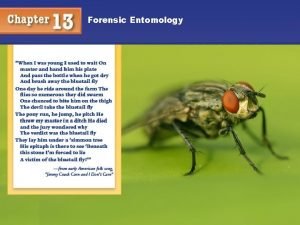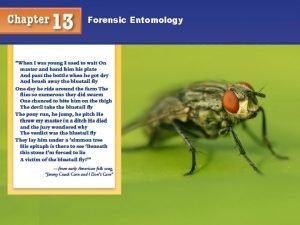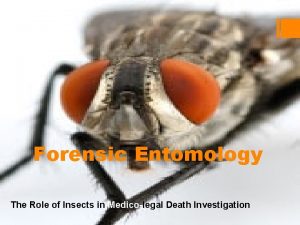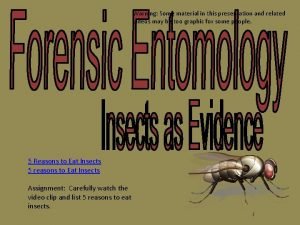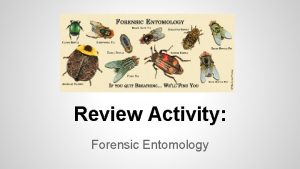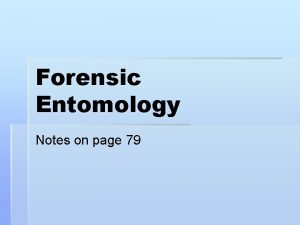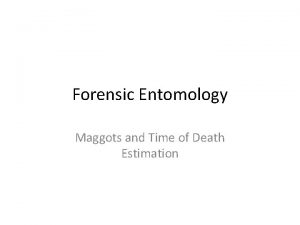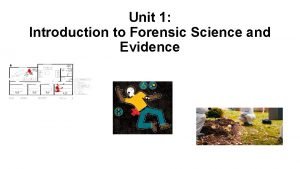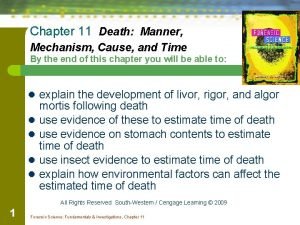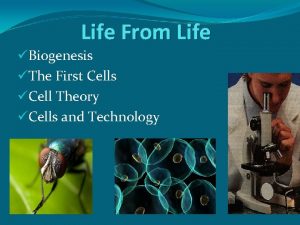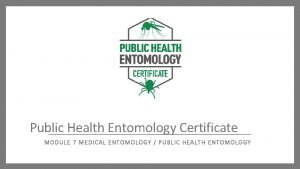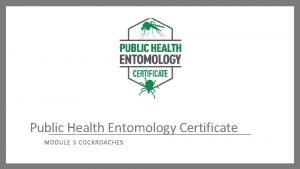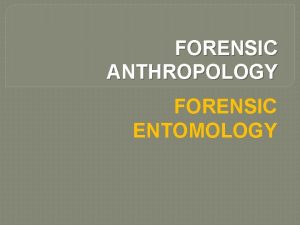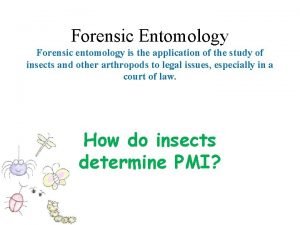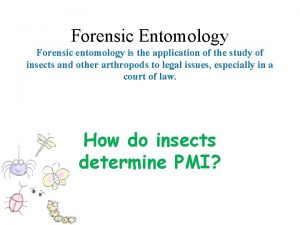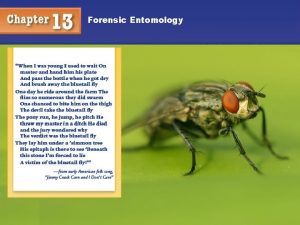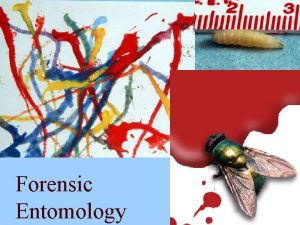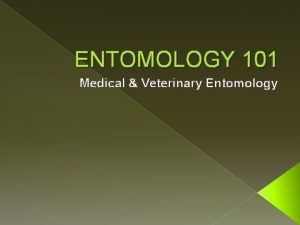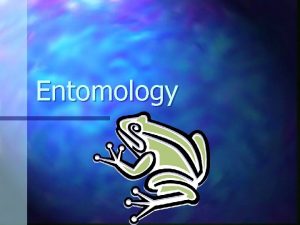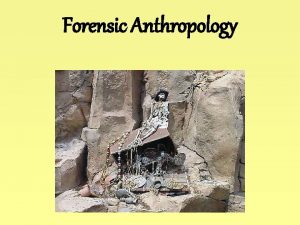Forensic Entomology Maggots and Time of Death Estimation


















- Slides: 18

Forensic Entomology Maggots and Time of Death Estimation


Entomology is the Study of Insects Images from: www. afpmb. org/military_entomology/usar myento/files/Army. Entomology. ppt

What is Forensic Entomology? • Forensic Entomology is the use of the insects and other arthropods that feed on decaying remains to help determine time of death. Other uses include movement of the corpse detection of toxins, drugs, or even the DNA of the victim through analysis of insect larvae.

Postmortem interval (PMI) • Forensic Entomology - used to determine time since death (the time between death and corpse discovery)

Forensic Entomology is Applied Biology • A forensic entomologist: – identifies the immature insects – determines the size and development of the insects – calculates the growth of the insects and passage through stages of the life cycle in laboratory – compares the growth against weather conditions to estimate time of oviposition

Succession of Insects on the Corpse • Estimates of postmortem intervals based on insects present on the remains are based on: • The time required for a given species to reach a particular stage of development. • Comparisons of all insect species present on the remains at the time of examination. • Ecological succession occurs as an unexploited habitat (like a corpse) is invaded by a series of different organisms. • The first invasion is by insect species which will alter the habitat in some form by their activities. These changes make the habitat attractive to a second wave of organisms which, in turn, alter the habitat for use by yet another organisms.

• Insect species arrive at a corpse in waves like clockwork

Image: http: //www. nlm. nih. gov/visibleproofs

Decay Rates Are Variable • Most important environment factors in corpse decay: • Temperature • Access by insects • Depth of burial • Other Factors • Chemical-- embalming agent, insecticides, lime, etc. • Animals disrupting the corpse

Time of Death can be broadly estimated up to about 36 hours Temperature Stiffness Time of death Warm Not stiff Dead less than three hours Warm Stiff Dead between 3 to 8 hours Cold Stiff Dead between 8 to 36 hours Cold Not stiff Dead in more than 36 hours

Calculating PMI from Accumulated Degree Hours (ADH) From To Egg 1 st Instar Temp Hours ADH Cumulative ADH 70° F 23 23 x 70= 1610 ADH 1610 1 st Instar 2 nd Instar 70 ° F 27 27 x 70= 1890 ADH 1610+ 1890 2 nd Instar 3 rd Instar 70 ° F 22 22 x 70= 1540 ADH 1610+1890+ 1540 3 rd Instar Pupa 70 ° F 130 x 70= 1610+1890+ 9100 ADH 1540+9100 Pupa Adult Fly 70 ° F 143 x 70= 1610+1890+ 10010 ADH 1540+9100 +10010

Calculating ADH from Climate Data

Phormia regina Spiracles are incomplete Third-instar larvae

Phaenicia species Spiracles are complete Third-instar larvae

Two Different Maggot Generations • These are distinguishable by the length and obvious size difference. • This is why we believe there are two peaks in our graph data for the Sunlit Pig. • The photograph was taken at a time consistent with the influx at 132 hours.


The End
 2.06 forensic entomology
2.06 forensic entomology Forensic entomology
Forensic entomology Medicolegal forensic entomology
Medicolegal forensic entomology @the..porky..maggot:pixeldrain.com/u/vbkr37be
@the..porky..maggot:pixeldrain.com/u/vbkr37be What does pmi stand for forensics
What does pmi stand for forensics What is it
What is it Forensic entomology notes
Forensic entomology notes How to calculate adh forensics
How to calculate adh forensics Forensic entomology does not include _____.
Forensic entomology does not include _____. Forensic entomology worksheet science spot
Forensic entomology worksheet science spot Chapter 11 forensic entomology
Chapter 11 forensic entomology Connotative meaning of clever
Connotative meaning of clever What it called
What it called Maggots mc
Maggots mc Maggots
Maggots Forensic pathologist vs forensic anthropologist
Forensic pathologist vs forensic anthropologist Forensic psychiatry vs forensic psychology
Forensic psychiatry vs forensic psychology Zoonotic diseases
Zoonotic diseases Public health entomology certificate
Public health entomology certificate
